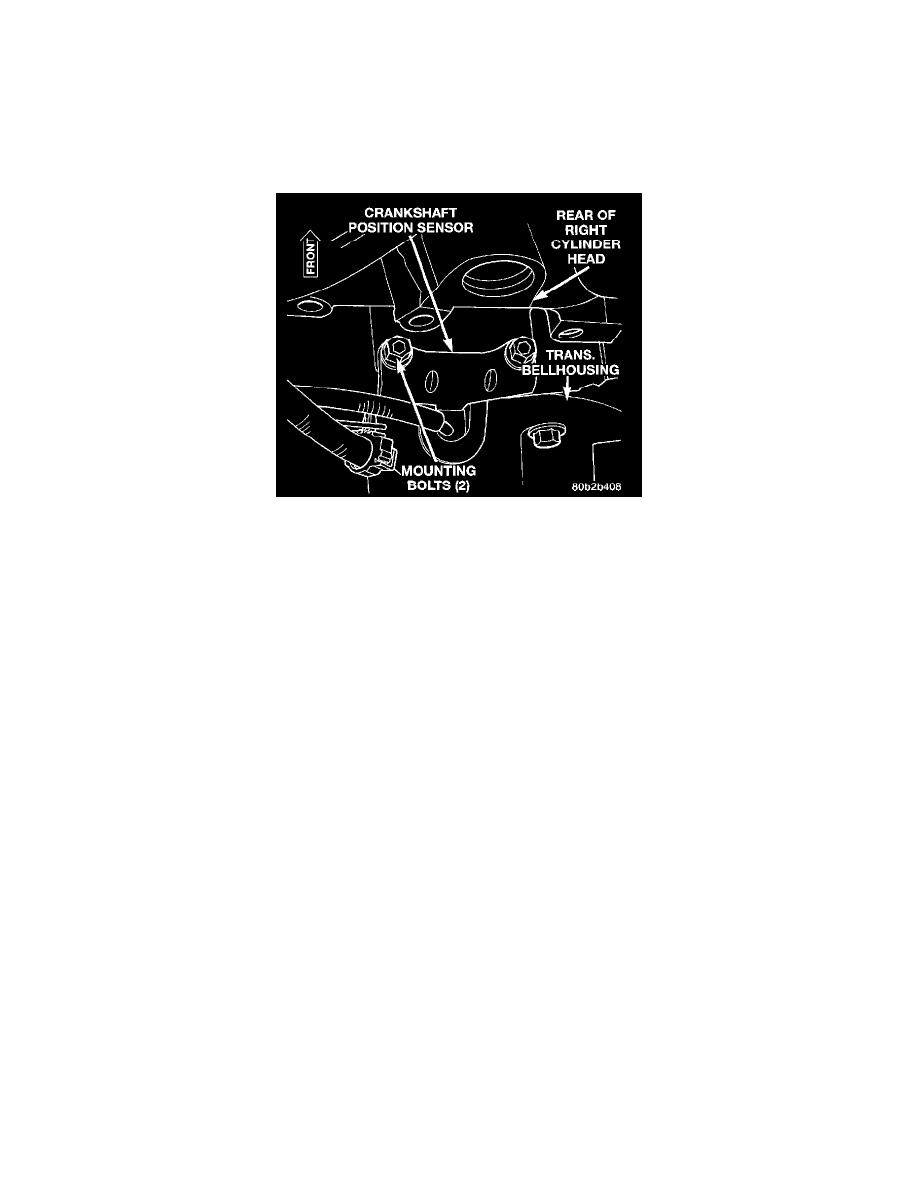RAM 1500 Van V8-5.2L CNG VIN T (1999)

Crankshaft Position Sensor: Description and Operation
CRANKSHAFT POSITION SENSOR - PCM INPUT
This sensor is a hall effect device that detects notches in the fly wheel (manual transmission) or flexplate (automatic transmission).
This sensor is used to indicate to the powertrain control module (PCM) that a spark and or fuel injection event is to be required. The output from
this sensor, in conjunction with the camshaft position sensor signal, is used to differentiate between fuel injection and spark events. It is also used
to synchronize the fuel injectors with their respective cylinders.
Crankshaft Position Sensor-Typical
The sensor is bolted to the cylinder block near the rear of the right cylinder head.
Refer to Ignition System for more crankshaft position sensor information.
The engine will not operate if the PCM does not receive a crankshaft position sensor input.
CRANKSHAFT POSITION SENSOR
Engine speed and crankshaft position are provided through the crankshaft position sensor. The sensor generates pulses that are the input sent to the
Powertrain Control Module (PCM). The PCM interprets the sensor input to determine the crankshaft position. The PCM then uses this position,
along with other inputs, to determine injector sequence and ignition timing.
The sensor is a hall effect device combined with an internal magnet. It is also sensitive to steel within a certain distance from it.
